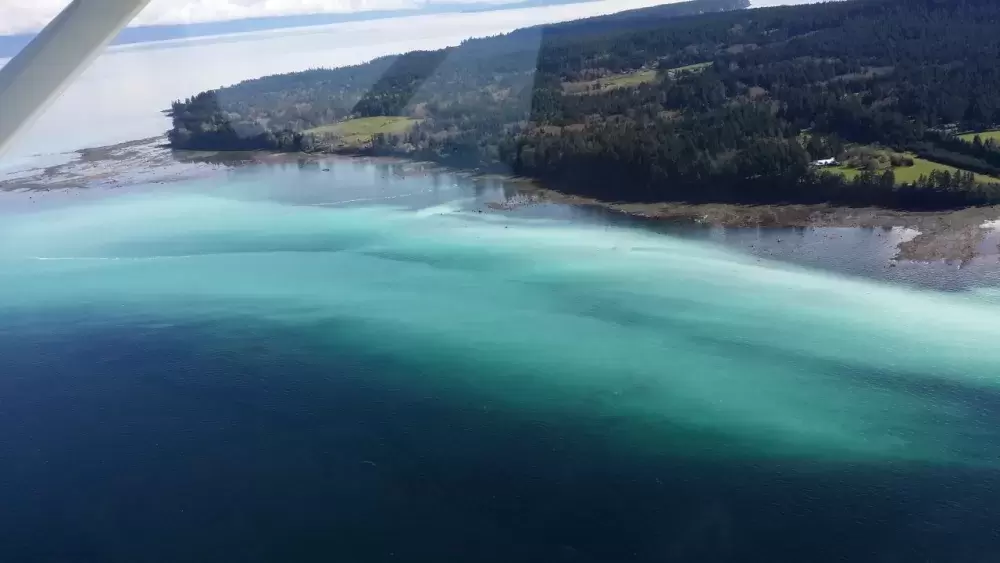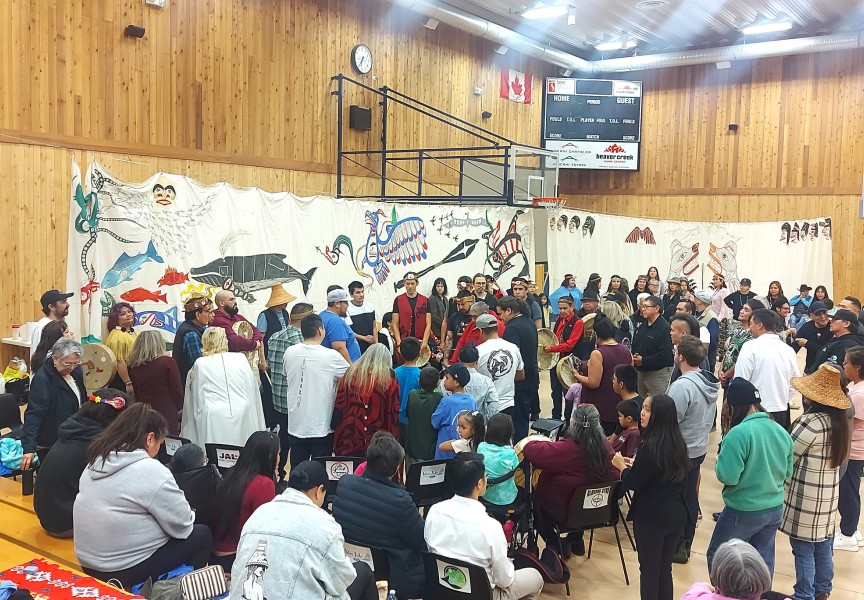Swaths of aquamarine have once again emerged along B.C.’s coastlines this spring, the annual marker that herring are undergoing their reproductive cycle. With each female laying thousands of eggs that stick to underwater rocks, silt and kelp, the lighter hue to the patches of ocean is caused by the release of milt from male herring, milky clouds that will fertilise the roe for days on end.
But after decades of scientific study, the reproductive patterns of these fish are also clouded with mystery, as biologists and fisheries managers struggle to agree on why herring populations fluctuate so dramatically along the West Coast.
Out of five regions on B.C.’s coast where the fish are monitored, only the Strait of Georgia experienced a biomass volume capable of having a commercial herring fishery this year. The Strait of Georgia’s estimated biomass of herring for 2019 is over 122,000 tonnes, an increase from the 113,400 in 2018. These predictions come from a combination of t airplane surveys of spawn, a test fishery that measures herring size and roe quality, as well as collecting underwater data on the amount of eggs laid in a particular area. The information to inform biomass forecasts are collected during the previous year.
“The Strait of Georgia stock is in the top third of its abundance that it’s been in since the 1950s,” said Neil Davis, director of resource management for Fisheries and Oceans Canada’s Pacific Region.
By the first week of April the seine and gillnet fleets were finished the brief herring harvest, which aims to catch females carrying eggs that are ripe, but not yet released. The roe is exported; 62 per cent going to Japanese markets, with China and the United States as other destinations. Following market forces, the majority of the actual fish will be fed to livestock or ground down into feed for fish farms.
On the west coast of Vancouver Island herring stocks are expected to less than 25,000 tonnes, slightly up from the 23,300-tonne forecast in 2018. The west coast hasn’t been able to support a commercial fishery in years.
“Despite the fishery being closed since ’05, we haven’t seen too much rebound in the stock,” said Davis, although he notes there has been some improvement. “There has been some in the last few years, so that’s been encouraging and we hope to see that continue.”
When the island’s west coast would be ready to support a commercial herring fishery is yet to be determined, although Davis said the DFO’s calculations indicate that the current biomass could already be outside of the critical zone for conservation.
“The abundance level below where we wouldn’t want to see the stock go, we actually estimate that there’s about a 90 per cent probability that the stock this year is above that limit reference point,” he said. “That’s an encouraging sign, but given how long it’s been in this low biomass state, we took a precautionary approach this year and did not open fisheries.”
The DFO has not set a timeline of how much more time the west coast herring need to regenerate its population, but Nuu-chah-nulth leaders want the commercial fishery closed until at least 2022.
“To help ensure WCVI (west coast Vancouver Island) herring stocks rebuild to sustainable levels, a longer period of commercial fishery closures will be required,” read a recent letter from the Council of Ha-wiih Forum on Fisheries to the DFO.
Recent history could provide a cautionary reminder to the federal department as it assesses what will be a sustainable volume of herring for commercial harvest. In 2014, legal action from five Nuu-chah-nulth nations caused a court-ordered injunction to block Vancouver Island’s west coast commercial herring fishery. But another Nuu-chah-nulth led injunction was denied the following year.
“The different judge rejected it,” explained Jim Lane, southern region biologist for Uu-a-thluk, the Nuu-cha-nulth Tribal Council’s fisheries department. “The industry came, sent out at least one or two boats. They prospected around and couldn’t find any fish that were worth catching, and so they went away after about a week or so.”
Now the DFO is consulting with Nuu-chah-nulth fisheries to better monitor herring populations.
“We don’t have an agreed upon stock rebuilding goal, we’re working on that with the department,” said Lane. “Now they’ve also recognized that their assessment models have a tendency to overestimate what the actual returns will be in the forecast.”
Any forecasts will be challenged by the fact that, unlike salmon, herring don’t necessarily return to where they’re migrated from.
“Their relationship to particular areas when they come back to spawn is not very well understood,” admitted Davis. “It doesn’t appear that it follows the same kind of pattern or behaviour as salmon do when a particular stock or run of salmon returns to the same stream year after year.”
“They’re a very dynamic fish; they can go from zero to a lot in just a year,” added Lane. “We don’t know why they spawn where they do. Thirty years ago there was a lot of spawn on the east side or Barkley [Sound]; now there’s hardly anything.”







